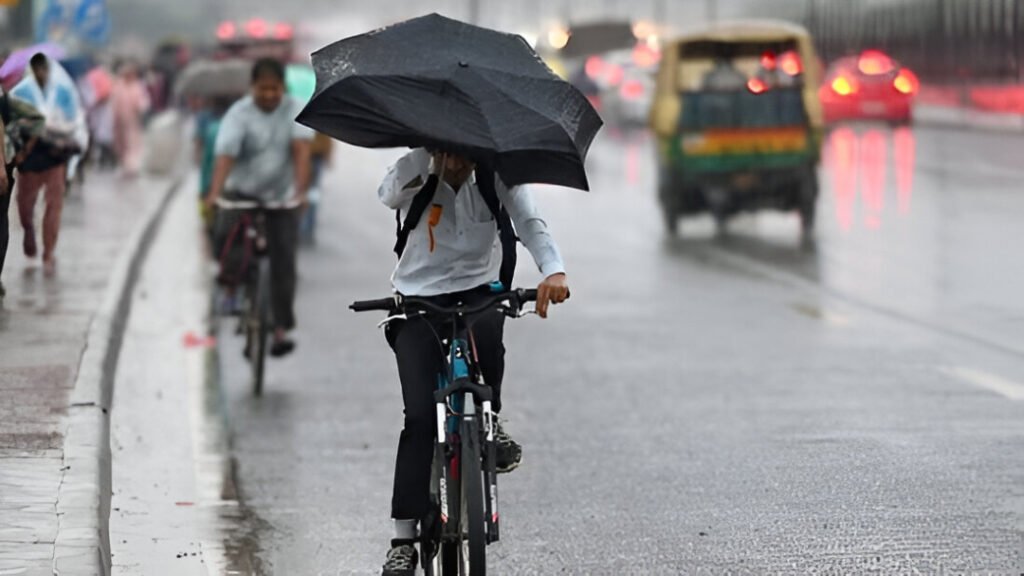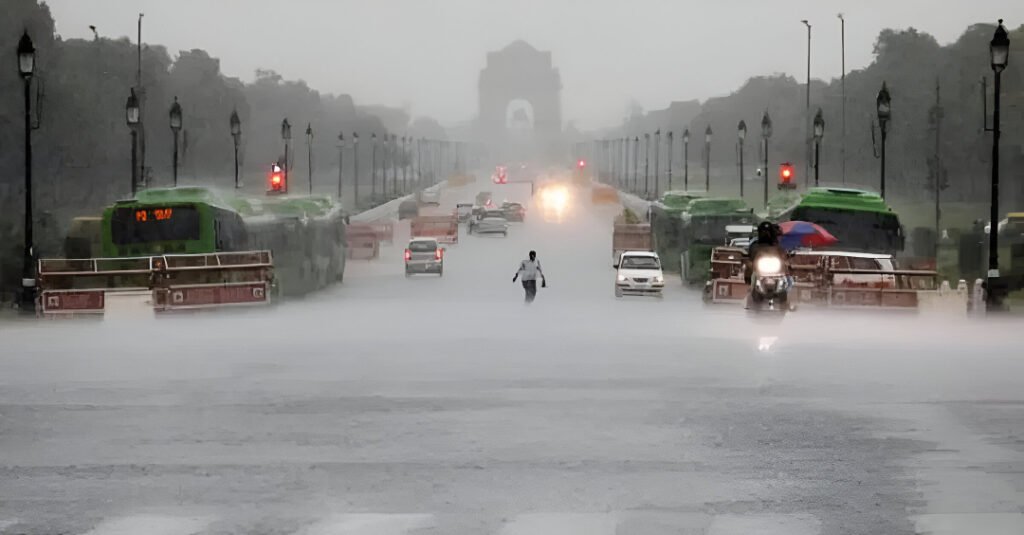The India Meteorological Department (IMD) has issued orange and yellow alerts for Faridabad and Gurugram and warned that Delhi and the wider NCR can expect more showers through the coming days as a wet September pattern persists. Local administrations in Haryana and Delhi have issued advisories after intermittent heavy downpours and waterlogging were reported across the region.

The bigger picture
This weather episode is part of an IMD forecast that September rainfall across North India is likely to be above normal, raising risks of urban flooding, traffic disruption, and elevated river levels—notably the Yamuna in Delhi—at a time when the monsoon withdrawal is still weeks away. Above-normal rains this month increase strain on drainage systems and emergency services already stretched after an unusually wet August.
Orange warnings for Faridabad and Gurugram
The IMD’s latest bulletins flagged Faridabad and Gurugram for isolated very heavy rainfall and thunderstorms—coded orange to signal potential disruption and localized flooding. Residents in low-lying and poorly drained areas were told to expect heavy spells and strong gusts and to follow local SDMA and civic instructions.
Delhi outlook—more showers and seasonal totals rising
Delhi’s meteorological outlook remains unsettled: the capital logged an exceptionally wet August and has already crossed the annual rainfall average for the season, with IMD forecasting continued rainfall into September. The agency cautioned that periodic heavy spells could push seasonal totals higher and prolong the monsoon’s local impact.
On-the-ground impacts—traffic, schools, and rivers
City reports show waterlogged subways, delayed buses, and localized traffic snarls in parts of Gurugram and Faridabad after heavy evening showers. Authorities have preemptively closed some schools and issued travel advisories for commuters; the Yamuna’s rising levels have also prompted flood watches in low-lying Ghaziabad and east Delhi neighborhoods.
Civic response—what authorities are doing now
Municipal corporations in the NCR have mobilized pumping crews, cleared key drains, and readied emergency shelters in vulnerable wards. Local police and traffic control units have been instructed to reroute traffic away from known choke points, while state disaster management agencies are coordinating relief logistics should any local flooding escalate.

Safety guidance—what residents should do now
If you live in Faridabad, Gurugram, or Delhi: avoid travelling through waterlogged roads, secure loose outdoor items, unplug high-value electronics during storms, and keep emergency numbers handy. Pregnant women, elderly people, and those with chronic illnesses should avoid unnecessary travel during heavy spells. Follow verified IMD updates and local administration advisories for evacuation or relief centers if water levels rise.
Transport tips—flights, trains, and roads to watch
Airlines and airport authorities have issued advisories for possible delays due to low-cloud conditions and thunderstorm activity; passengers should check real-time flight status. Road commuters should expect delays near underpasses and low-lying stretches; rail passengers should monitor announcements for route alterations caused by waterlogging or track inspections.
What to expect next—IMD’s short-term forecast
IMD’s short-range outlook through the next 72 hours indicates scattered to fairly widespread rains across Delhi-NCR with intermittent heavy spells. The agency’s monthly assessment suggests September will remain wetter than normal for the region, so residents and planners should maintain heightened readiness.
Where this information comes from
According to the India Meteorological Department (IMD) and reporting by the Hindustan Times, Times of India, Economic Times, Indian Express, and Business Standard, Faridabad and Gurugram are under active weather alerts, and Delhi is expected to see further showers as part of a wetter-than-normal September pattern. Readers are advised to follow official IMD bulletins and local civic advisories for live updates.
Conclusion
With orange and yellow alerts in effect, plan conservatively: postpone non-essential outdoor travel, keep emergency kits ready, and check IMD updates every few hours. For businesses and schools in the NCR, contingency plans for remote work or staggered schedules will reduce commuter risk until the weather stabilizes. Staying informed and prepared is the best defense against short-lived but intense monsoon bursts.











